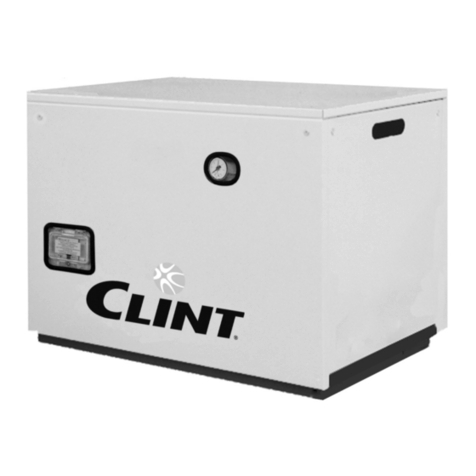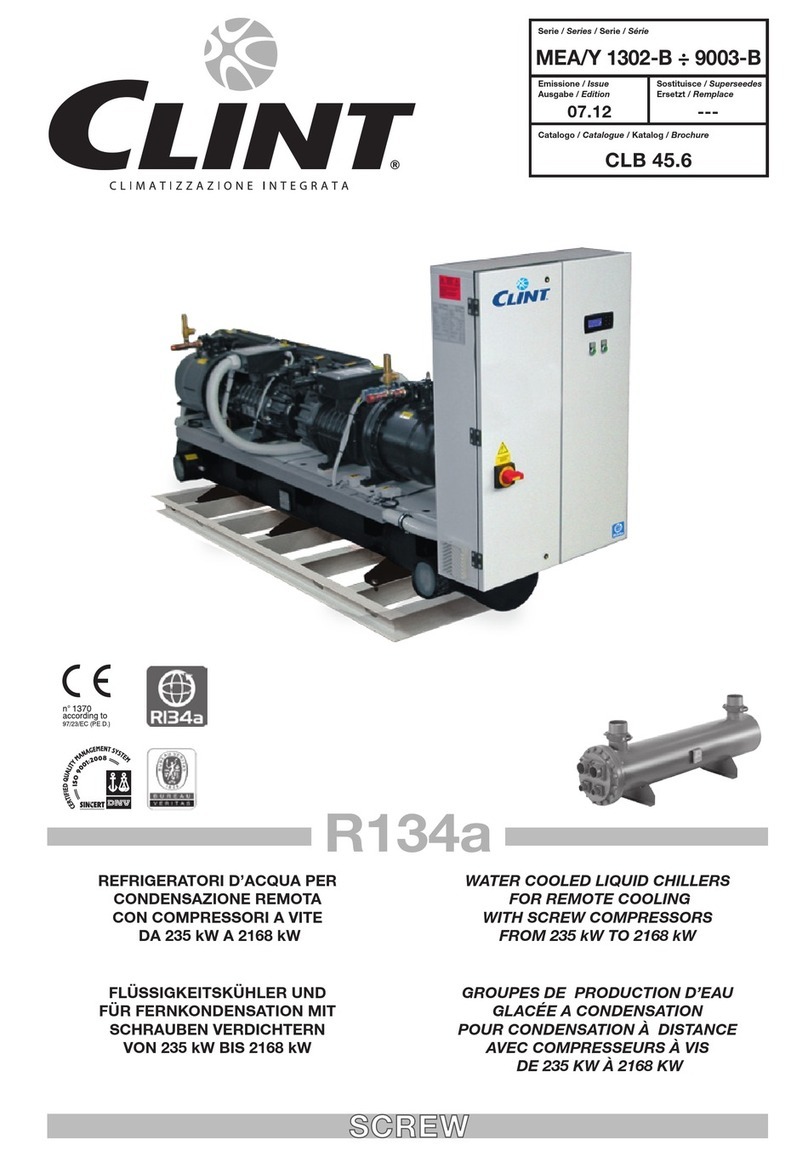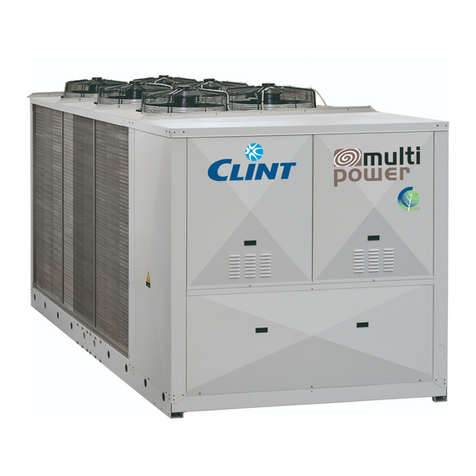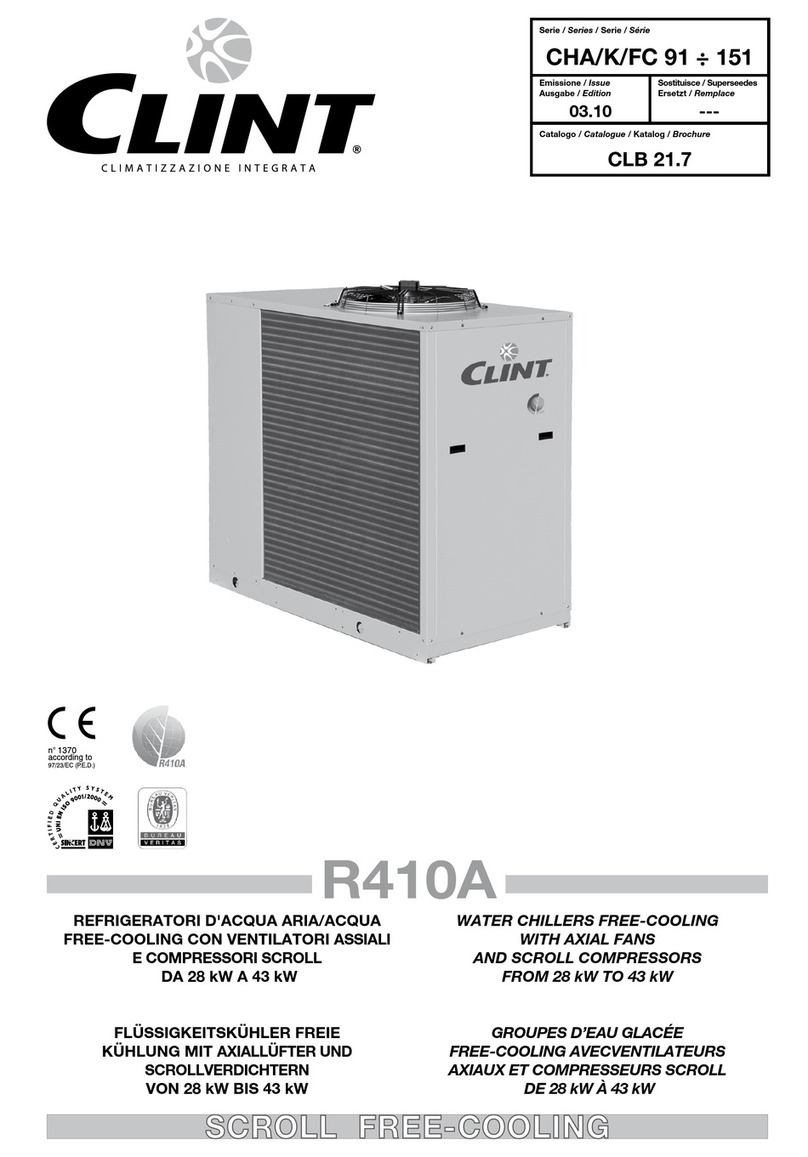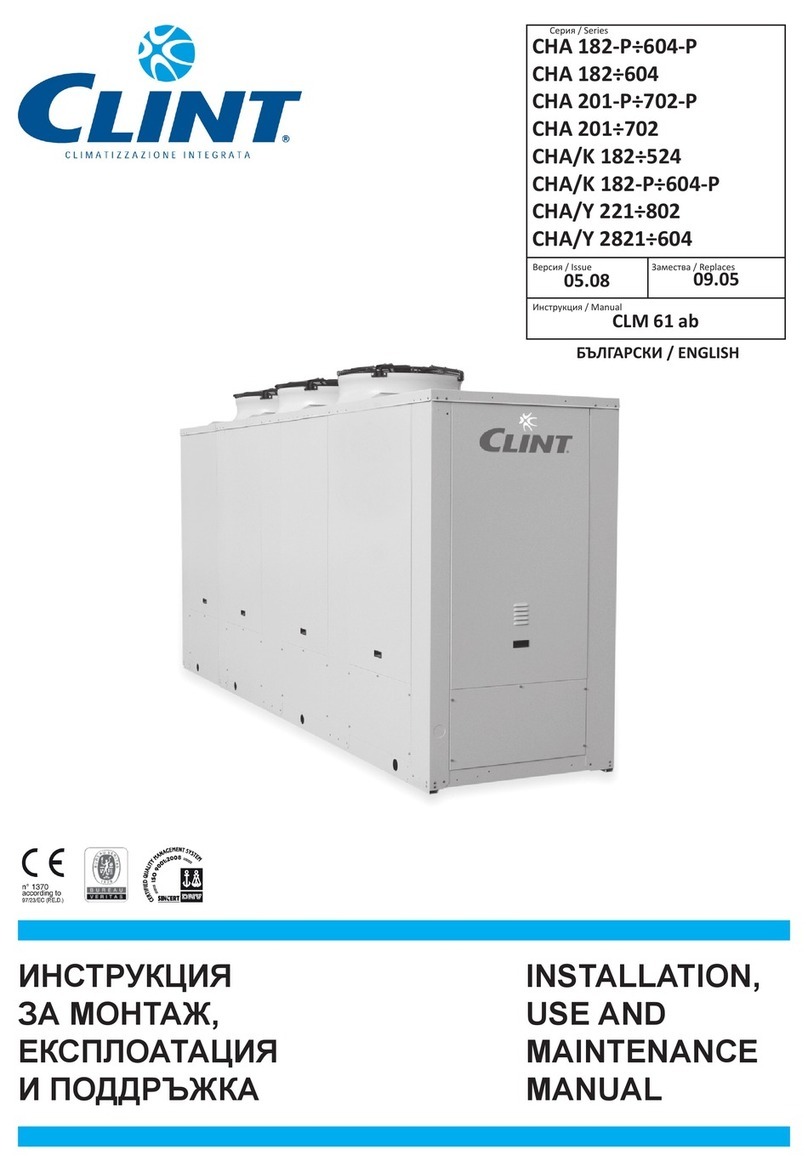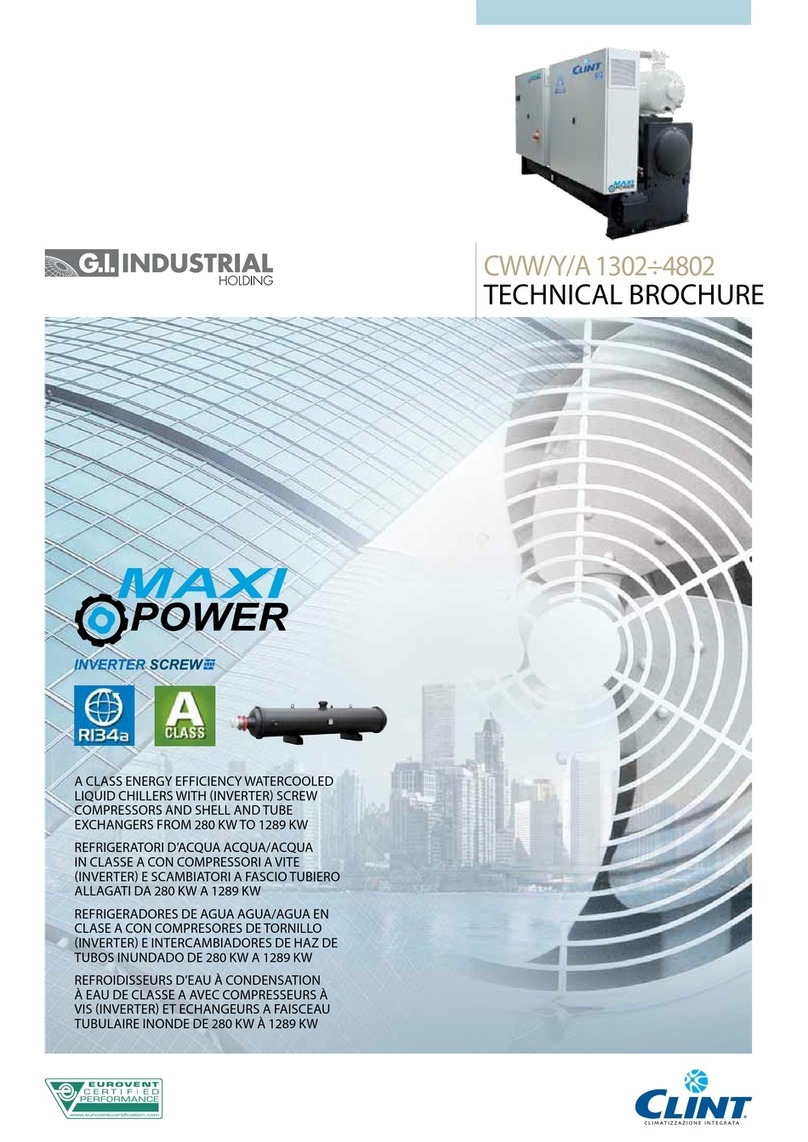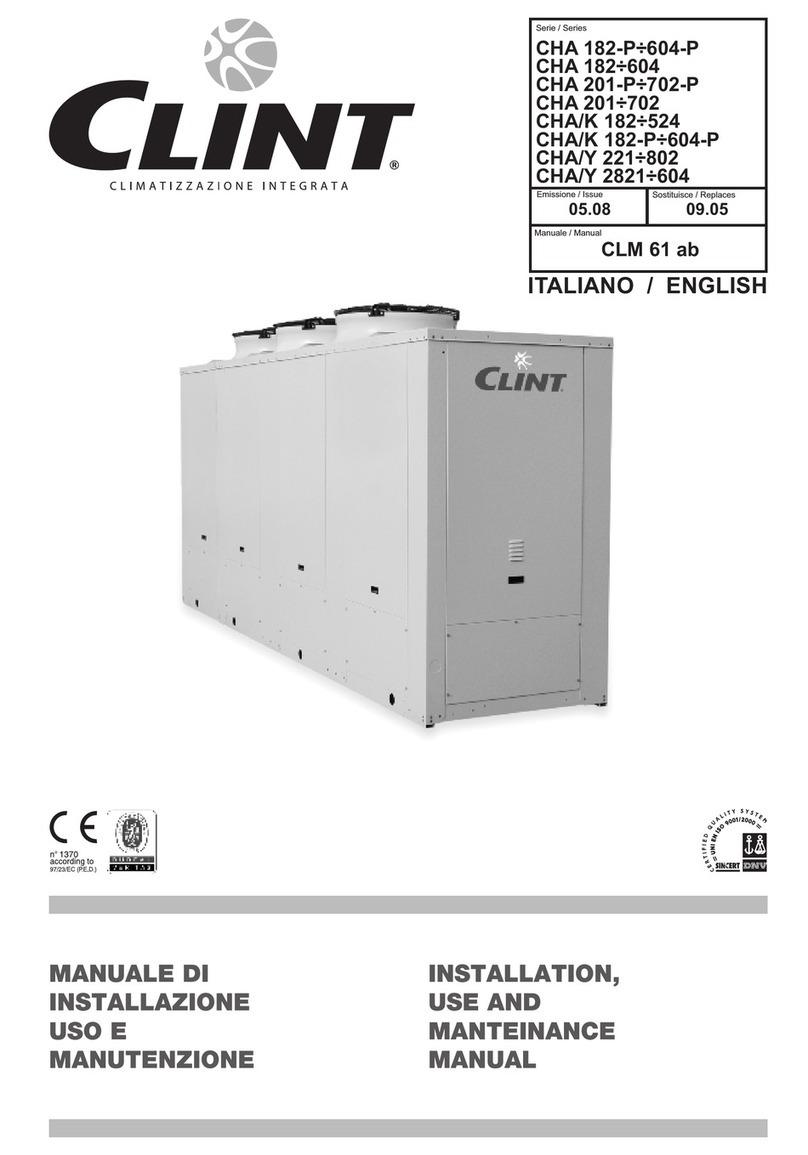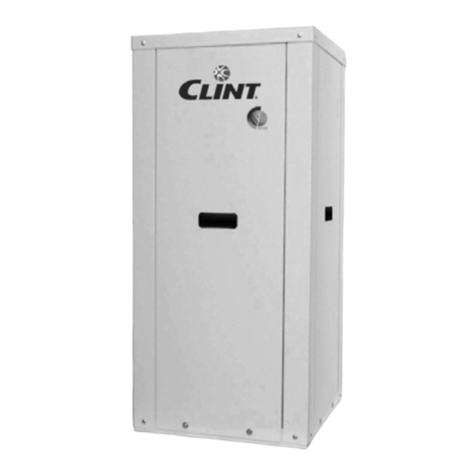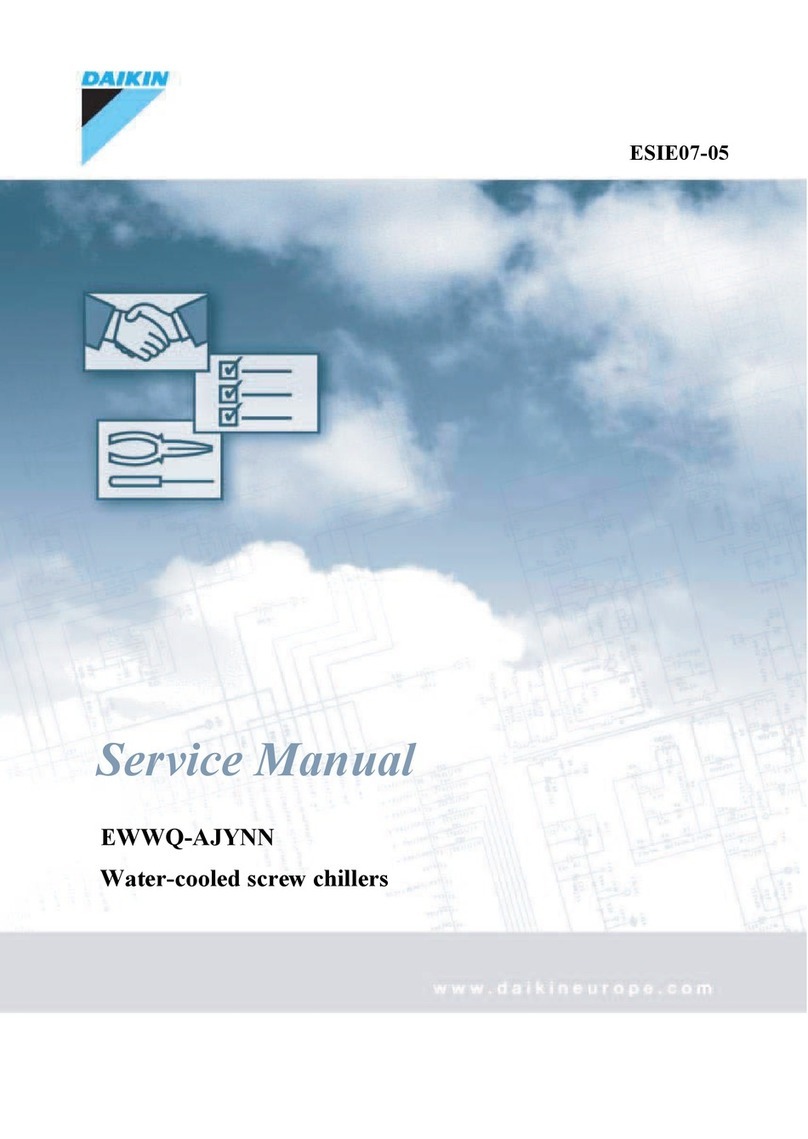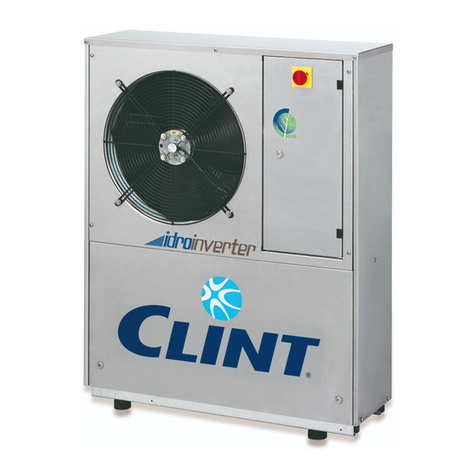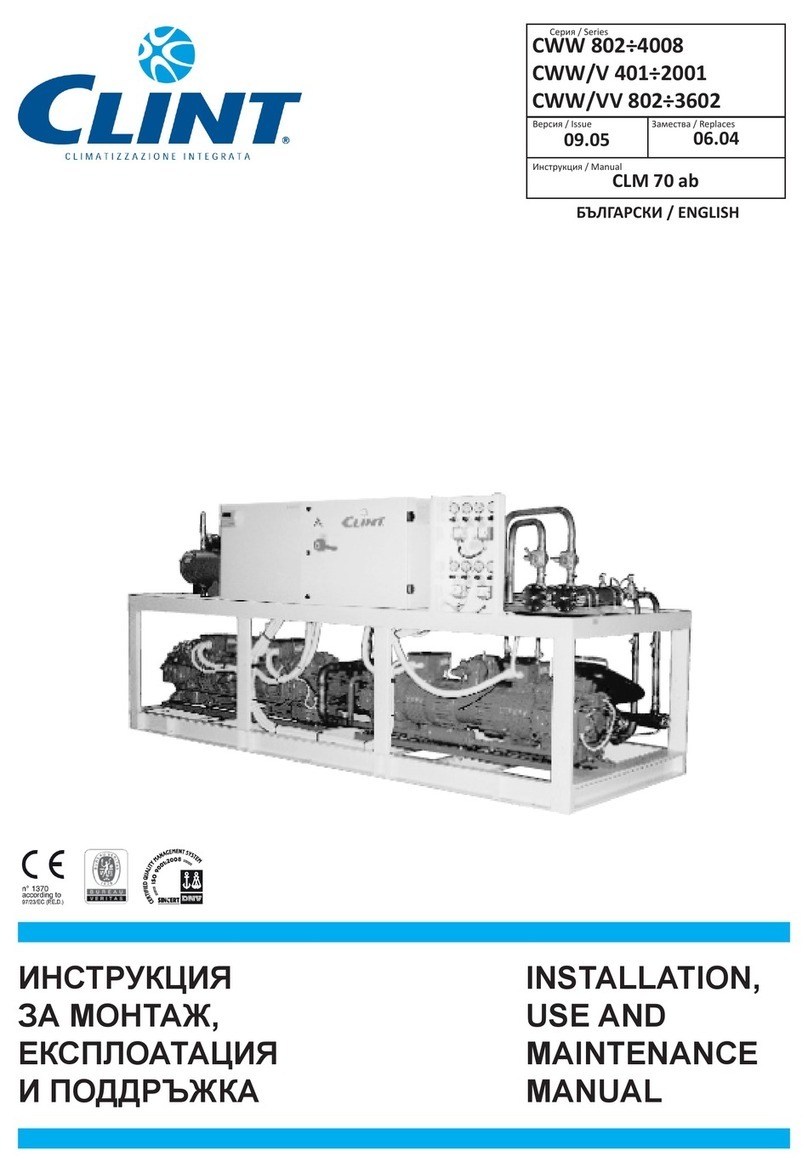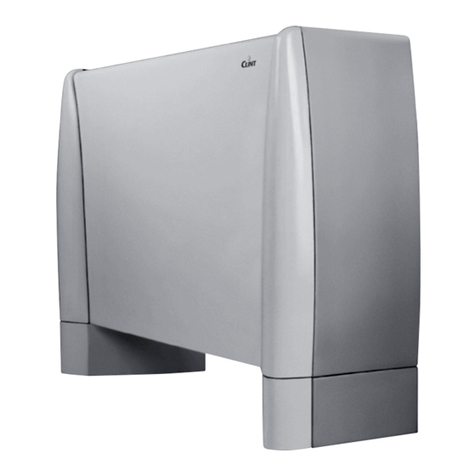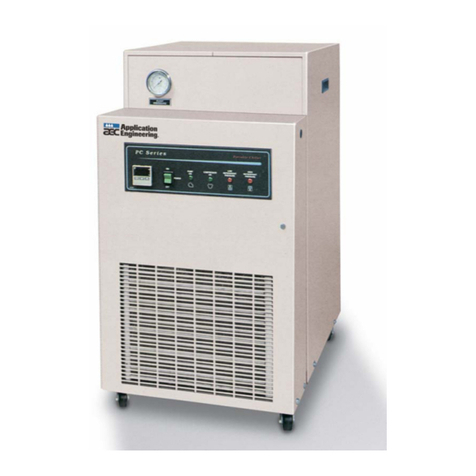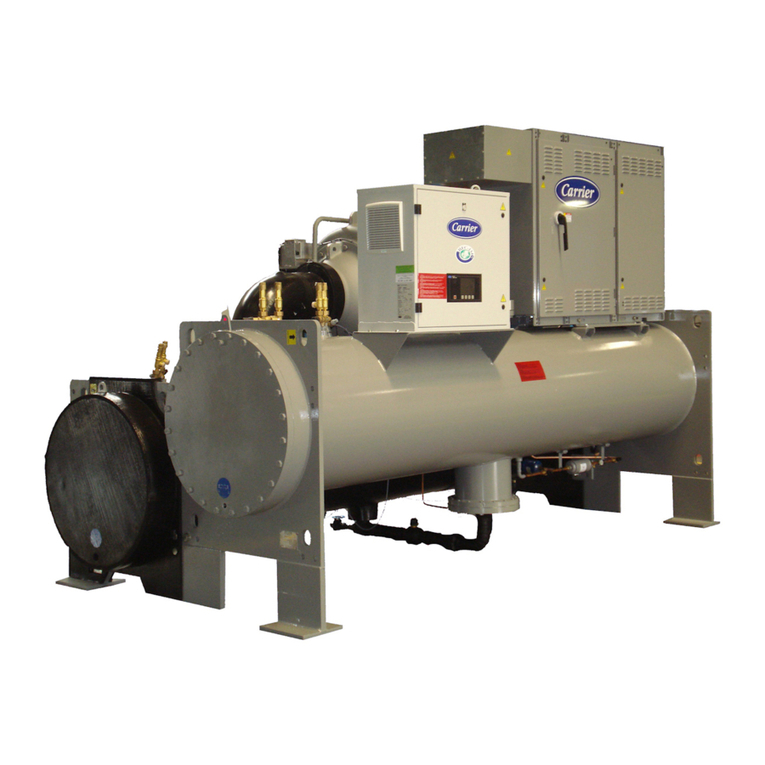
5
CHA
1. PREMESSA
1.1 INFORMAZIONI GENERALI
Questo manuale contiene le norme di installazione, uso
e manutenzione dei refrigeratori CHA, evidenziandone
rischi e pericoli connessi. Esso è stato espressamente
studiato e sviluppato per permettere al personale pre-
posto un utilizzo facile e in sicurezza dei refrigeratori
d’acqua CHA. Leggere attentamente e completamente
tutteleinformazioniinessoriportate.Prestareparticolare
attenzione alle norme evidenziate con
in quanto se non osservate possono causare danno alle
persone, all’ambiente e/o alla macchina stessa.
La società declina ogni responsabilità per qualsiasi uso
improprio della macchina, per modifiche alla stessa
non autorizzate o per la non osservanza delle norme
riportate sul manuale.
Ilmanualedeveessereconservatoilluogosicuroemesso
a disposizione del personale addetto alla conduzione
ed alla manutenzione del refrigeratore.
1.2 ALLEGATI
Fanno parte integrale del presente manuale i documenti
evidenziati a pag. 2.
1.3 AVVERTENZE
LeunitàCHAsonostateprogettateecostruitepergaran-
tire nel tempo grande affidabilità di esercizio e massima
sicurezza; per questo e grazie alle scelte progettuali e
realizzative, la società può garantire la totale conformità
agli standard di sicurezza CE.
Ulteriore garanzia è assicurata dai collaudi cui la mac-
china è stata sottoposta in fabbrica.
All’utente resta quindi soltanto l’impegno di un uso
proprio e di una manutenzione preventiva conforme alle
indicazioni contenute in questo manuale.
Ogni intervento, di qualsiasi natura, sulla
macchina deve essere preceduto da una
attenta lettura del presente manuale in tutte
le sue parti.
1. INTRODUCTION
1.1 GENERAL INFORMATION
This manual contains the installation, use and mainte-
nance instructions for the CHA chillers, and highlights
all connected risks and perils. It has been expressly
prepared and written to allow authorised users to use
the CHA water chillers in complete safety and with the
greatest of ease. Please read the whole of this manual
with care, paying special attention to the sections
marked with
as non-compliance may cause harm to people, dete-
riorate the environment and/or damage the unit.
Thecompany declines allresponsibilityfor any improper
use of the unit, unauthorised modifications or non-com-
pliance with the instructions contained in this manual.
Please keep this manual in a safe place and make it
available to chiller operators and maintenance men.
1.2 ATTACHMENTS
The documents shown on page 2 form an integral part
of this manual.
1.3 WARNINGS
The CHA units have been designed and built to ensure
long-term operating reliability and maximum safety;
for this reason and thanks to the company’s design
and construction policy, the company is able to guar-
antee that this product totally complies with EC safety
standards.
A further guarantee of this is provided by the factory
tests carried out on the unit.
The user, therefore, must only ensure the unit is properly
used and that maintenance operations are carried out
according to the indications contained in this manual.
Theunitshouldnotbetoucheduntilthewhole
of this manual has been carefully read.
